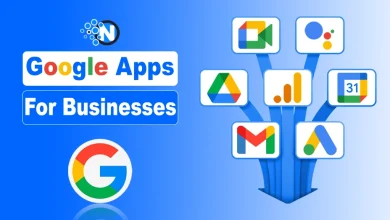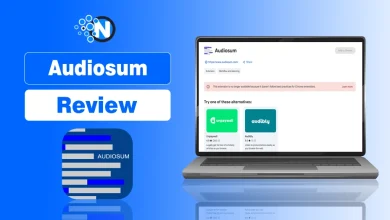Ahrefs – Features, Free Tools and Pricing (Review)

If you’ve been trying to keep up with SEO in 2025, you already know it’s no longer just about finding the right keywords or getting a few backlinks. Google’s algorithm updates are relentless, AI-generated content is flooding the web, and ranking on page one has become a full-time job.
I found myself constantly asking: What’s working today? What changed last week? And how can I stay ahead without burning out?
In my case, I’ve been using Ahrefs for over five years, and during that time, I watched the platform grow from a powerful backlink checker into a full-scale SEO suite. But the real turning point came with the advent of AI and the rise of constantly shifting SERPs.
Traffic dropped. What used to work stopped working. And no single SEO tool could give me the real-time clarity I needed. That changed when Ahrefs launched its AI-powered tools.
Suddenly, I could monitor SERP volatility in real time, uncover hidden keyword opportunities (even the ones Google Search Console ignores), and get instant alerts for technical issues. Ahrefs did not just changed, it became the first platform that truly helped thousads like me to keep pace with SEO’s new AI-driven reality.
In this detailed review, I’ll walk you through everything Ahrefs offers in 2025, from its flagship features and AI innovations to its pricing plans, free tools, and how it compares to competitors.
<mark style="background-color:rgba(0, 0, 0, 0);color:#0061fb" class="has-inline-color">What is Ahrefs?</mark>
Ahrefs is an all-in-one SEO platform to help you optimize your website, drive more organic traffic, and stay ahead of the competition.
The Ahrefs tool has advanced from being known primarily for its backlink analysis to a powerful “AI Marketing Platform Powered by Big Data“.
Ahrefs search engine is built on its own proprietary web crawler, AhrefsBot, which is recognized as the best SEO crawler after Google’s.
This infrastructure powers a colossal database of over 28.7 billion keywords across 217+ countries to a strong foundation for its new AI capabilities and analytics.
The platform’s strategic focus is now centered on three core pillars: AI integration, real-time data, and an improved user experience, all of which are better to navigate a changing search pages.
While it’s a great tool for SEO agencies, content creators, and in-house marketing teams, it’s also accessible to bloggers and small business owners, however, its cost can be expensive for some users.
AI Integration Across the Ahrefs
The platform’s investment in AI is evident across its toolset. The AI Content Helper and AI Content Grader are designed to help marketers with content optimization, while AI Overviews in the SERP provide concise summaries of ranking pages to speed up analysis. A closer look at the platform’s AI approach reveals a distinct pattern:

Ahrefs is using AI to generate insights and guides, rather than to simply generate low-quality text. This approach is a subtle but critical distinction from other tools, which can encourage a heavy reliance on AI-generated content, a strategy that could be vulnerable to helpful content updates and a lack of original thought.
The Ahrefs approach is focused on quality and EEAT (Experience, Expertise, Authoritativeness, and Trustworthiness) with a commitment to sustainable, long-term SEO.
<mark style="background-color:rgba(0, 0, 0, 0);color:#0061fb" class="has-inline-color">Ahrefs</mark> <mark style="background-color:rgba(0, 0, 0, 0);color:#0061fb" class="has-inline-color">Features</mark>
1. Rank Tracker 2.0
Rank Tracker 2.0, revamped in 2025 with a faster backend, supports bulk keyword management, SERP overviews, and share-of-voice charts.

Users can tag keywords by topic or project, track SERP features like featured snippets, and use the “Identify Intents” function to monitor intent shifts over time. This is critical in volatile SERPs, where rankings can fluctuate daily.

Real-time tracking and intent analysis enable proactive optimization, ensuring sustained visibility in dynamic search environments.
2. Always-On Site Audits
A major shift in the Ahrefs philosophy is the introduction of Always-on Site Audits (AOA). Previously, most users relied on scheduled crawls, often run weekly, this also cause a critical technical SEO issue go unnoticed for days.
The AOA tool lets the crawling never stop, and users receive near real-time alerts when new error-level issues are detected. These alerts are grouped and emailed every 30 minutes to avoid spam. This also allowed the marketers to fix problems before they have a chance to negatively impact a site’s rankings.

For sites hosted on Cloudflare, Ahrefs has also introduced a deployment option that uses a Cloudflare Worker for faster, secure patching.
3. The ‘Anonymous Queries’ Report
A significant and often-overlooked limitation of Google Search Console (GSC) is that it hides a large portion of keyword data.
According to the Ahrefs, approximately 46% of all clicks in GSC come from queries that are marked as “anonymous“. Ahrefs has addressed this with a new Anonymous queries report.

The tool matches GSC data with Ahrefs’ own Organic keywords report to uncover these hidden long-tail keywords, along with their traffic, volume, and country statistics.
This provides a level of visibility that GSC simply does not offer, effectively positioning Ahrefs not as a replacement for GSC but as a critical enhancement layer that helps users fully understand their organic search performance.
4. Paid Keywords 3.0
The new Paid keywords 3.0 report in Site Explorer provides a substantial upgrade to paid search analysis. The old report only showed data from the latest SERP, which meant many ads were missed due to their volatile nature.
The new data logic now automatically checks older SERPs, up to 30 days back, if an ad is not found in the latest one. This process catches far more ad placements and provides a significant increase in data coverage. For example, for one domain, the new report found nearly 2x more paid keywords than the old version.

5. Keywords Explorer
Keywords Explorer is the centerpiece of Ahrefs’ keyword research capabilities. It provides essential metrics such as Search Volume and Keyword Difficulty (KD), along with a unique Traffic Potential metric that estimates the search traffic a page might receive if it ranks #1 for a given keyword.
The tool’s Parent Topic feature is a powerful function that groups related keywords to identify the broader topic a keyword falls under. This helps to prevent keyword cannibalization and ensures that content is structured to build topical authority.

For marketers seeking to find “low-hanging fruit,” an expert strategy involves filtering for keywords with a low KD score where a website with low authority is still ranking at the top. This indicates a high chance of penetrating the SERP and gaining visibility.
The Parent Topic feature in Keywords Explorer directly informs the use of the Content Gap tool, which, in turn, helps to identify linkable assets that can be promoted via Content Explorer.
This integrated workflow allows a user to identify a keyword, understand its broader topic, find a content gap, create content to fill it, and then promote that content to build links.
The emphasis on metrics like Traffic Potential and the Parent Topic also signals a move away from a keyword-by-keyword focus to a more holistic, topic-centric content strategy, a crucial approach in a search landscape that rewards comprehensive, authoritative content.
6. Web Analytics
Ahrefs has entered the web analytics space with a new, privacy-friendly tool that serves as an alternative to Google Analytics. This tool is cookie-free and provides real-time metrics, reflecting the actual number of visitors for a selected period.

It also features a comparison mode to analyze trends over time and a relative mode to see percentage shifts for quicker insights. A new feature also tracks outbound link clicks through which users can users to see which external links are catching visitors’ attention.
7. Link Building
The Ahrefs link building can be broadly categorized into four buckets: Add, Ask, Buy, and Earn. The most effective and sustainable strategy often involves a combination of asking for links and earning them by creating high-quality content.
Ahrefs provides several powerful tools to facilitate these strategies. A key tool for finding link opportunities is the Link Intersect tool. This competitive analysis tool identifies domains and pages that link to your competitors’ websites, but not to yours.

The strategy is simple: if a site links to three of your competitors, it is highly likely that they have a tendency to link to websites in your niche. This makes them a high-potential link prospect.
8. Brand Radar
Brand Radar is used to track how your brand is mentioned across traditional search engines and AI-generated answers on platforms like ChatGPT, Google SGE, and Gemini.
With the rise of AI chatbots influencing how users discover and engage with brands, Brand Radar helps you stay visible in AI-driven responses, not just search listings. It scans for brand mentions in AI overviews, featured snippets, and top-ranking content.

For even deeper insights, Ahrefs offers Brand Radar AI, a premium add-on that uses machine learning to evaluate sentiment, brand positioning, and how often your competitors are being mentioned in comparison.
💡Pro Tip: If you want to track your brand visibility in the emerging AI-first search era, Brand Radar is a must-use feature, especially for digital PR professionals, CMOs, and brand strategists.
Ahrefs Free SEO Tools
- Keyword Generator: a free tool that finds thousands of relevant keyword ideas in seconds.
- Keyword Difficulty Checker: a free checker that estimates how hard it is to rank in the top 10 for any keyword.
- Backlink Checker: a free checker that shows the top 20 backlinks to any website or webpage (with basic backlink metrics).
- Broken Link Checker: a free tool that quickly finds broken (404) links to and from any page or site, useful for link-building and site maintenance.
- Ahrefs DA Checker: a free domain rating (DR) lookup that displays a site’s Domain Rating (backlink-strength score) to gauge its authority.
- Website Traffic Checker: a free traffic estimation tool (part of Ahrefs’ Traffic Checker) that shows estimated organic search visits for any site or URL.
- SERP Checker: a free tool to analyze the top 10 search results for any keyword (in any country) and view their ranking and metrics.
- Keyword Rank Checker: a free rank tracker that checks a site’s ranking position for a specific keyword in Google (for any country).
- Ahrefs SEO WordPress Plugin: a free WordPress plugin that performs on-page content audits, monitors backlinks, and helps grow a site’s organic traffic.
- Ahrefs SEO Toolbar: a free browser extension (Chrome/Firefox) that provides on-page SEO reports, a broken-link checker, redirect tracing, and SERP country switching directly in the browser.
- AI Writing Tools: a free suite of AI-powered content-generation tools (outline generators, paraphrasers, summarizers, etc.) to speed up writing and content marketing.
- Top Websites (AhrefsTop): a free directory listing the top 1,000 websites worldwide by Ahrefs’ estimated organic traffic (updated monthly).
How Much Does Ahrefs Cost? Pricing Plans
- Ahrefs Webmaster Tools: Free, limited to own sites, no credits or tracked keywords. Ideal for basic site monitoring.
- Starter: $29/month (monthly only), 100 credits, 50 keywords, 1-month history. Suited for hobbyists and small businesses.
- Lite: $129/month ($1290/year), 500 credits, 750 keywords, 6-month history. Best for freelance SEOs.
- Standard: $249/month ($2490/year), unlimited credits, 2000 keywords, 2-year history. Designed for in-house marketing teams.
- Advanced: $449/month ($4490/year), unlimited credits, 5000 keywords, 5-year history. For small agencies.
- Enterprise: $14,990/year, unlimited credits, 10,000 keywords, unlimited history. For large agencies and enterprises.

The credit system, applied to Starter and Lite plans, consumes credits per report, filter, or data request, frustrating power users.
For example, a Lite plan, Ahrefs membership could incur $500-$600/month in additional costs for heavy usage. Standard and higher plans, with unlimited credits, are better for intensive research.
Further, Ahrefs offers no free trial, but its free tools like Backlink Checker, Keyword Generator, Website Authority Checker provide limited access.
Ahrefs Freemium Tools/Features
- Ahrefs Webmaster Tools (AWT) – a free plan for verified website owners that gives limited access to Ahrefs’ core tools (Site Explorer, Site Audit, and Web Analytics). Site owners can use AWT indefinitely without paying, but data is capped (e.g. limited rows of backlinks/keywords in Site Explorer, 5K crawl credits/month in Site Audit).
- Looker Studio Connectors – data connectors that let advanced-plan users pull Ahrefs data (Site Explorer, Rank Tracker, Site Audit) into Google Looker Studio (formerly Data Studio); this feature is only available on Advanced (and higher) paid plans.
- Brand Radar AI – an optional add-on ($199/mo) that enhances the Brand Radar tool with AI-powered brand monitoring (tracking how a brand appears in AI-generated search results on platforms like ChatGPT, Gemini, etc.).
- AI Content Helper & Content Grader (Content Kit) – premium content-analysis features available via the Content Kit add-on (from $99/mo). These AI-powered tools analyze and improve content by suggesting topics, formats, and SEO optimizations, and include a content-quality grader.
- Report Builder – an upcoming custom-reporting add-on (planned at $99/mo) that will let users combine Ahrefs data into dashboards and reports (e.g. shareable performance reports, marketing KPIs).
- Project Boost (Pro/Max) – premium add-ons (starting at $20/mo for Pro, $200/mo for Max) that unlock advanced features: the Pro add-on adds auto-submit to IndexNow for instant page indexing and AI-powered site audits (“Ask AI”), while the Max add-on adds daily rank updates, “Patches” (auto-SEO-fix suggestions), and other enterprise features.
Ahrefs Pros and Cons
Strengths:
- Unrivaled Data: 28.7 billion keywords, billions of pages, and the largest backlink index ensure comprehensive insights.
- AI Integration: Features like AI Content Helper, Brand Radar, and intent identification align with AI-driven search trends.
- Real-Time Monitoring: Rank Tracker 2.0 and Always-On Audits enable proactive issue resolution.
- Global Localization: Supports 217+ countries with AI-Powered Keyword Translations and GBP Monitor for local SEO.
- User-Friendly Interface: Despite complexity, dashboards are intuitive, with customizable reports via the Report Builder.
Weaknesses:
- High Cost: Pricing and credit limits on lower plans deter small businesses and freelancers.
- Learning Curve: The platform’s depth can overwhelm beginners.
- No Free Trial: Limits accessibility for testing.
- Limited Support: No phone support or mobile app, relying on email and live chat.
Strengths and Weaknesses – Ahrefs vs. Other SEO Tools
- Ahrefs vs. Semrush: Ahrefs is widely regarded as the “undisputed champion of backlink analysis,” with a backlink index that is second to none. Semrush, in contrast, is an “all-in-one digital marketing powerhouse” with a vast array of tools for PPC, social media, and content marketing. While Ahrefs has a larger overall keyword database globally, Semrush’s database for the USA is larger, providing more keyword variations for that specific market.
- Ahrefs vs. Moz: Moz is known for its user-friendly interface and unique metrics like Domain Authority (DA) and Page Authority (PA). It also makes it a great choice for fundamental SEO. Ahrefs is generally seen as a more data-intensive and complex tool, catering to users who require a deeper level of analysis.
<mark style="background-color:rgba(0, 0, 0, 0);color:#0061fb" class="has-inline-color">Final Verdict</mark>
After using Ahrefs extensively in real-world campaigns, from reviving low-traffic blog posts to winning high-authority backlinks, I can confidently say it’s more than just an SEO tool. It’s a competitive advantage.
The AI-powered insights, real-time audits, and unmatched keyword database give you an edge in an ever-changing Google landscape. Whether you’re tracking competitor PPC campaigns or uncovering “anonymous” keyword clicks Google hides, Ahrefs exposes what others don’t.
But it’s not perfect.
Yes, the pricing may feel steep for freelancers or solopreneurs, and the lack of a free trial might hold some back. But with Ahrefs Webmaster Tools and a growing suite of free SEO utilities, there’s still a smart entry point for beginners.
<strong>People Also Ask</strong>
What’s better, Semrush or Ahrefs?
Both are top-tier SEO tools, Semrush excels in all-in-one marketing (PPC, social media), while Ahrefs is unbeatable for backlink analysis and real-time SEO data.
Is Ahrefs worth it?
Yes, especially if you’re serious about SEO, its accurate data, AI tools, and real-time features justify the cost for most professionals.
Is Ahrefs more accurate than Moz?
Yes, Ahrefs offers a deeper backlink index and broader keyword database than Moz.
What is DR in Ahrefs?
DR (Domain Rating) is Ahrefs’ metric that measures the overall strength of a website’s backlink profile on a scale from 0 to 100.
What is Ahrefs Rank?
Ahrefs Rank ranks all websites in their database by the strength of their backlink profiles, #1 being the strongest.
How to get another free trial of Ahrefs?
Ahrefs doesn’t offer a traditional free trial, but you can access limited features via Ahrefs Webmaster Tools for verified sites.
What are Ahrefs 3 main data sources?
Ahrefs collects data from its own crawler (AhrefsBot), third-party clickstream data, and integrations with tools like Google Search Console (via Ahrefs Webmaster Tools).
Who is the founder of Ahrefs?
Ahrefs was founded by Dmitry Gerasimenko, a Ukrainian entrepreneur and software engineer, in 2010.



